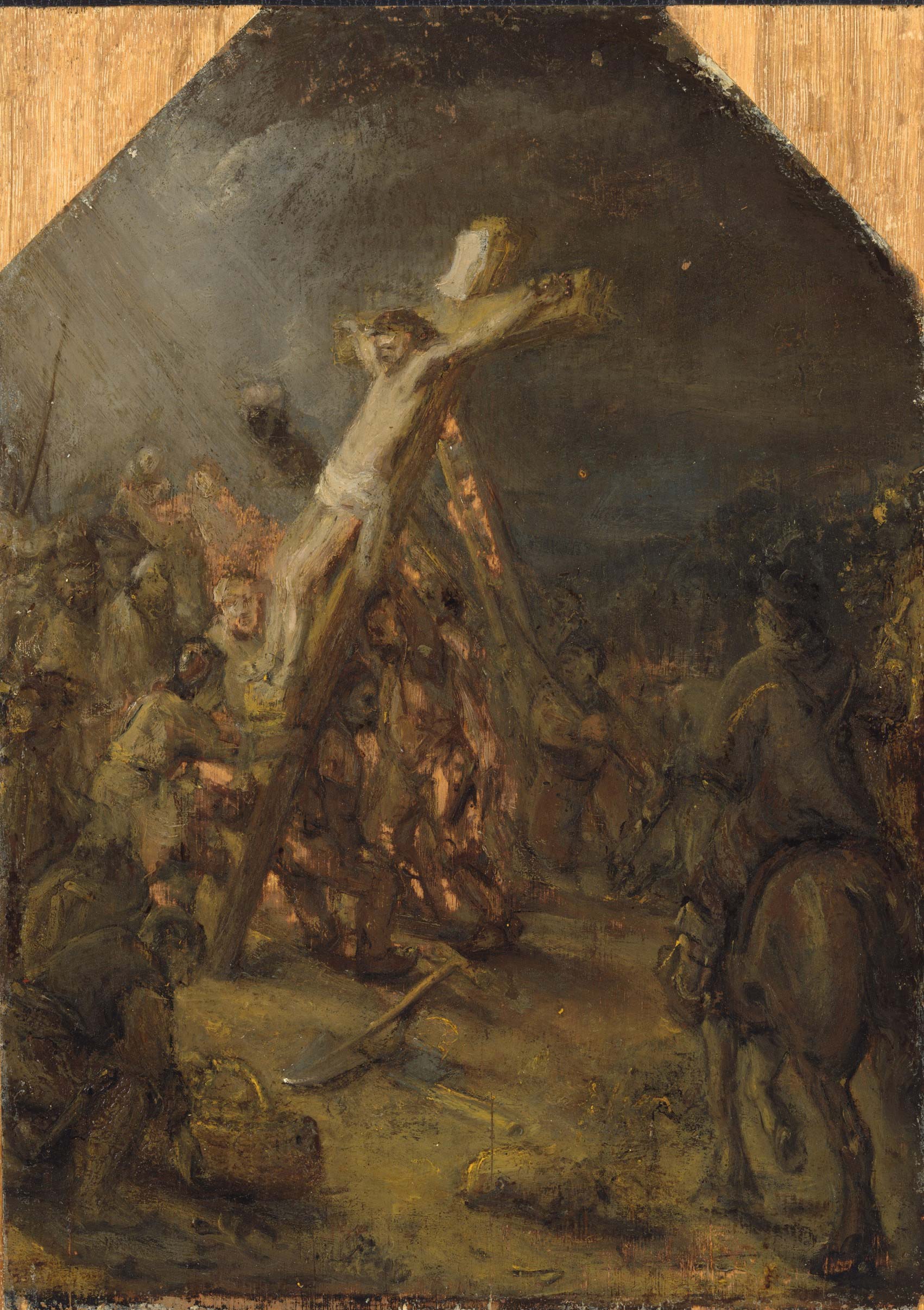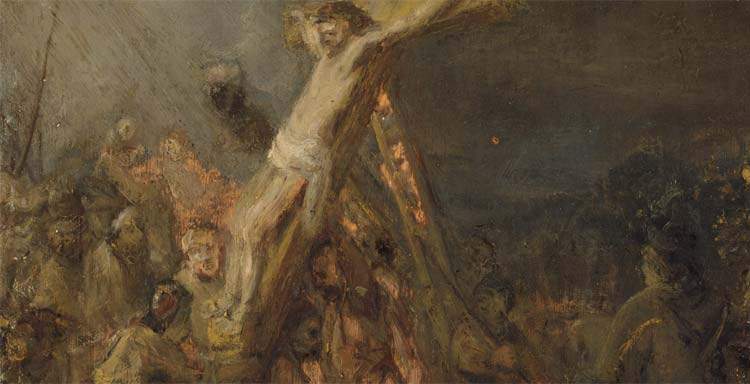The Bredius Museum in The Hague, Netherlands, has made it known that it has “discovered” a Rembrandt sketch in its collections: it is an oil drawing depicting theRaising of the Cross. It was purchased in 1921 by the collector Abraham Bredius, after whom the museum is named: when he bought the work, the museum points out, he was already convinced that it was the work of Rembrandt, but subsequent studies ruled out the possibility that the sketch could be traced back to the great seventeenth-century Dutch artist.
Now the sketch has been examined again, and recent findings have led scholars to revise the attribution of the work. Assigning the work back to Rembrandt is art historian Jeroen Giltaij, former chief curator of ancient painting and sculpture at the Museum Boijmans Van Beuningen in Rotterdam. Giltaij reveals his discovery in his new publication The Great Rembrandt Book, a catalog of all 684 paintings by the Dutch artist.
After its purchase by Abraham Bredius, art historians who analyzed the panel were convinced that it was the work of a follower of Rembrandt. The painting is back under scrutiny because it has recently been cleaned up and examined, and restorers at the Rijksmuseum in Amsterdam, who analyzed the sketch, also confirmed Giltaij’s attribution that it is a reworking of an earlier painting on the same theme, executed ten years earlier (around 1633) and kept at the Alte Pinakothek in Munich. It is not a mere copy, according to Giltaij, because the differences are striking: “a copyist does not change anything,” the museum says, “but paints an original as precisely as possible. Despite the differences, there is indeed a connection between the Bredius Museum oil sketch and the Munich painting. The composition of the oil sketch shows great artistic talent.”

According to the Hague institution, the correct attribution had been marred by old layers of varnish overlaying the sketch, which made it difficult to correctly assess Rembrandt’s style. Restorers therefore decided to “strip” the painting of all later additions so that they could study the original 17th-century painting. Restorer Johanneke Verhave of Restauratie Atelier Rotterdam physically handled the operations, so now the Bredius Museum can show the painting without the later alterations. This means that each of Rembrandt’s brushstrokes and touches are now clearly visible, but at the same time the damage in the varnish layer is also now clearly distinguishable.
Diagnostic investigations, in particular infrared reflectography (IRR) and X-rays, were also conducted on the work. The Rijksmuseum in Amsterdam also performed macro X-ray fluorescence scanning (Macro XRF). The data obtained from this research are currently being analyzed. Regarding the use of materials, the Rijksmuseum found nothing to contradict an attribution to Rembrandt. Scholar Marta Dominguez-Delmás, a researcher in dendrochronology at the Rijksmuseum, was able to determine through dendrochronological research that the panel on which theRaising of the Cross was painted dates from 1634 and may have been used by the painter between 1642 and 1645.
Analyses also show that the sketch has several pentimenti (corrections made by the artist when the work was created). This means that the composition was a creative process, which rules out the possibility that the oil sketch is a copy of Rembrandt’s time from another painting. It is also interesting to note that Rembrandt reused an element from his own work in the sketch for the horseman on horseback on the right (the same horseman appears in an engraving by Rembrandt, dated around 1629).
Now, starting Nov. 3, the Bredius Museum is devoting a presentation to the oil sketch and research by the Rijksmuseum and restorer Johanneke Verhave. The work can be viewed until January 15, 2023.
 |
| Holland, Rembrandt sketch discovered at Bredius Museum |
Warning: the translation into English of the original Italian article was created using automatic tools. We undertake to review all articles, but we do not guarantee the total absence of inaccuracies in the translation due to the program. You can find the original by clicking on the ITA button. If you find any mistake,please contact us.